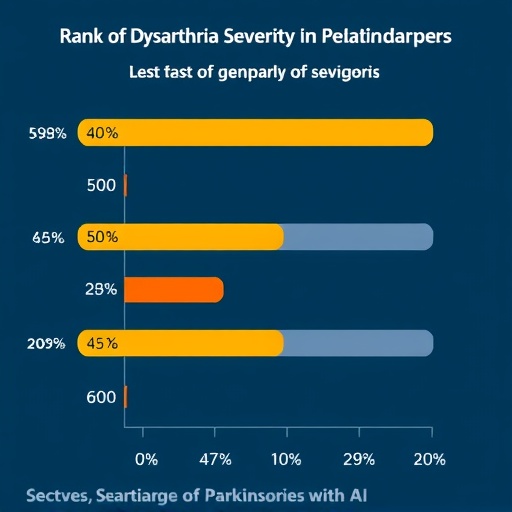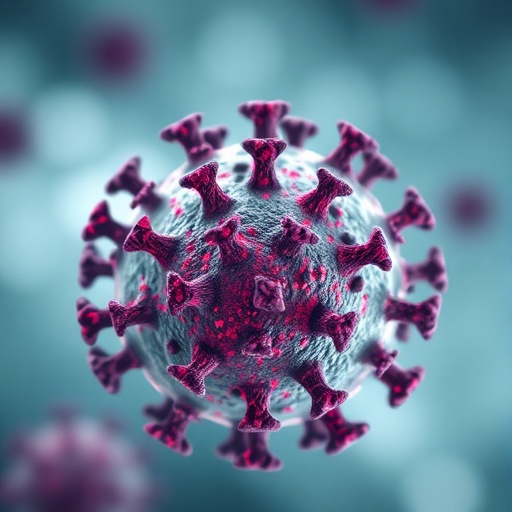In a groundbreaking study that pushes the boundaries of medical diagnostics and artificial intelligence, researchers have developed a machine learning approach designed specifically for the classification of dysarthria severity in individuals with Parkinson’s disease. This innovative method could revolutionize how health professionals evaluate and manage speech disorders associated with neurological conditions. By harnessing the capacity of machine learning to analyze vast arrays of data, the study shows promise in providing timely and accurate assessments that can profoundly enhance patient care.
Dysarthria is a motor speech disorder characterized by poor articulation, abnormal speech rhythm, and impaired voice quality. It often emerges as a significant symptom in patients with Parkinson’s disease, a neurodegenerative disorder affecting movement and coordination. The traditional methods of assessing dysarthria typically rely on subjective evaluations, which can lead to inconsistencies and errors. With the advent of machine learning technologies, researchers are now exploring ways to introduce objectivity and precision into these evaluations.
The research team, comprising experts in biomedical engineering and artificial intelligence, employed an innovative ordinal ranking approach—an advanced machine learning technique. This method categorizes the severity of dysarthria not merely into binary classifications, but into a more nuanced ordinal scale. This progressive ranking system allows for a detailed analysis of speech characteristics, capturing variations that reflect subtle changes in the patient’s condition over time, providing clinicians with more actionable insights.
The study utilized a diverse dataset comprising recordings of patients diagnosed with Parkinson’s disease, each showcasing varying degrees of dysarthria. The dataset included multiple speech samples that were meticulously annotated by speech-language pathologists. This collaborative effort allowed the machine learning algorithms to learn from high-quality data, fostering the model’s accuracy and reliability. The incorporation of expert evaluations into the training process represents a significant step forward, as it effectively merges clinical expertise with technological advancements.
Machine learning algorithms excel in handling complex datasets and recognizing patterns that might not be immediately obvious to human observers. In this study, the researchers employed feature extraction techniques to distill relevant acoustic properties from the speech samples. Parameters such as pitch, speech rate, and vowel articulation were analyzed, providing the algorithm with critical inputs that inform its classification capabilities. The utilization of sophisticated statistical methods ensured that the model maintained a high level of precision while simultaneously reducing the potential for overfitting, a common pitfall in machine learning applications.
The results were promising; the model demonstrated a high level of accuracy in categorizing dysarthria severity levels. This capability could drastically improve the clinical workflow, allowing healthcare providers to make informed decisions based on the specific needs of each patient. The traditional subjective assessments could be augmented by this machine learning tool, leading to more effective therapeutic interventions tailored to individual patient profiles.
In light of these advancements, the implications for both clinical practice and future research are substantial. The ability to classify dysarthria severity with a higher degree of accuracy opens up new avenues for personalized treatment strategies. Therapists could utilize the insights generated from the ordinal ranking to design targeted speech therapies that address specific areas of weakness within a patient’s speech production. Furthermore, this study may serve as a prototype for similar approaches in other degenerative speech disorders, expanding the utility of machine learning in neurology and speech pathology.
Looking forward, the researchers foresee the implementation of this machine learning model in clinical settings as both feasible and advantageous. With an increase in digital health technologies, integrating such systems into existing diagnostic frameworks could enhance the efficiency of healthcare delivery. Moreover, continuous learning mechanisms could allow the model to adapt and improve as it ingests more diverse data, continuously refining its algorithms and enhancing its predictive capabilities.
Despite the promising outcomes, the researchers are cognizant of the limitations inherent in the study. For instance, while the model was built on a substantial dataset, there remains the risk of bias if the training data does not encompass a wide range of patients reflecting various demographics and speech patterns. It’s critical that future studies expand their datasets to ensure that the model is robust and universally applicable across different populations and severities of Parkinson’s disease.
As machine learning continues to evolve, it holds the potential to shift paradigms within the healthcare sector. The intersection of artificial intelligence and personalized medicine can illuminate pathways to better patient outcomes, particularly for those suffering from complex conditions like Parkinson’s disease. The research presented in this study marks a pivotal moment in the intersection of technology and medicine, illustrating the capacity of advanced analytics to foster improved understanding and management of dysarthria—a vital component of patient care.
In summary, as we stand on the brink of an era characterized by intricate medical technologies intertwined with patient care, innovations such as the machine learning model outlined in this study will become increasingly vital. By offering a more accurate framework for diagnosing dysarthria severity, researchers are paving the way for transformed approaches to treatment, demonstrating that technology and humanity can indeed work hand in hand for better health outcomes. As these advancements continue to unfold, it is crucial for researchers, clinicians, and policymakers to collaborate in harnessing the full potential of machine learning in medical diagnostics, ensuring that all patients benefit from these revolutionary changes.
The promise of artificial intelligence in clinical settings is immense; however, the path forward necessitates careful consideration, rigorous testing, and an unwavering commitment to ethical standards in patient care. It is through such diligent efforts that the true transformative potential of technology in healthcare can be realized.
Subject of Research:
Article Title: A Machine Learning with Ordinal Ranking Approach for Dysarthria Severity Classification in Parkinson’s Disease
Article References:
Chen, FY.B., Chien, CY., Yu, KF. et al. A Machine Learning with Ordinal Ranking Approach for Dysarthria Severity Classification in Parkinson’s Disease.
J. Med. Biol. Eng. (2025). https://doi.org/10.1007/s40846-025-00987-8
Image Credits: AI Generated
DOI:
Keywords:
Tags: advanced ranking systems for speech disordersartificial intelligence in healthcarebiomedical engineering innovationsclassification of motor speech disordersdysarthria severity assessmentenhancing speech therapy outcomesimproving patient care with AImachine learning in medical diagnosticsneurodegenerative disease assessment toolsobjective evaluation of dysarthriaParkinson’s disease speech disorderssubjective vs objective speech evaluations





